 Your new post is loading...
 Your new post is loading...
As with so many other news events, there was plenty of speculation and misinformation flowing on Twitter about the crash of an airplane at San Francisco airport — but for better or worse, that is just the way the news works now.Another breaking news event — in this case, the crash of Asiana Airlines flight 214, which broke apart while landing at San Francisco airport on Saturday morning — sparks more criticism (primarily on Twitter, of course) about how Twitter is a haven for errors and unfounded speculation, and how people seem compelled to retweet things during these events even if they have no knowledge of whether they are true or not.
To some, including regular readers of GigaOM, this won’t come as any surprise. Welcome to the way the news works now.
We saw similar criticisms and debates about the value of Twitter as a news medium during the Boston bombings, Hurricane Sandy, the shootings at Sandy Hook elementary school, and pretty much every other major news event that has happened over the past several years. At some point during the action, someone will complain about how many mistakes there are circulating on Twitter, and others will argue that we should all just refrain from tweeting or retweeting anything — or perhaps just wait until later and buy a newspaper....
In 2013 there is no excuse for such failed crisis communications. Any and every company should be ready to make a public statement on any crisis in one hour or less. It is good public relations; it is good media relations; it is good crisis communication; it is good social media crisis communication. So here it is on Monday afternoon, February 18, 2013 as I sit in my office near New Orleans and Burger King’s Twitter account was hacked nearly 4 hours ago. The hackers make it look like a McDonald’s account. Burger King eventually managed to get Twitter to suspend the account and pull down the content and ugly comments. But in the 140-character world of fast news, the fast food company is SLOW to officially issue a statement....
...On February 8th, the New York Time’s Josh Broder released a scathing review of the Tesla Model S, claiming it was unfit for cold weather driving. The problem was, according to Elon Musk, Tesla’s CEO, there were factual inaccuracies in the piece. Matter of fact, according to him, the review “was fake” and he would produce some hard data to back that up. Yesterday, he did, and it’s quite shocking. It turns out Broder did a number of things to, at least apparently, purposely sabotage the test. Here are just a few....
Rumors disseminated via social media could “wreak havoc” on the world economy, according to a new report from the World Economic Forum titled “Global Risks 2013.” The deliberate or accidental spreading of misinformation, poetically termed “digital wildfires” by the report, could result in mass stock sell-offs as well as (even) more serious consequences like disorganized, panicked mass evacuations -- basically stampedes on a giant scale that could cause thousands of deaths. These cheerful thoughts are only a few of an array of threats to the world economy identified by WEF, including plenty of things unrelated to social media or technology per se: if you like you can also worry all night about a global pandemic, runaway climate change resulting in mass flooding, and even a visit by an advanced alien civilization (really). But social media provides the most interesting anxiety fodder, in my humble op-ed, in part because its capacity for sowing chaos has already been amply demonstrated....
... Thanks to Twitter, Facebook and a plethora of smartphone apps, newsrooms now have an entirely new toolbox available to them in breaking news situations. And here’s another one to add to the kit: Banjo. Banjo is an app that describes itself as “a social discovery service.” Available for iPhone and Android users, the app collects social media updates from a variety of networks in real-time and posts them according to geo-tag. You don’t have to “check in” or even be part of a network to see other people’s updates, which are shown on a map. In January, Andy Stettler used Banjo to clarify a breaking news situation. Stettler, an assistant online editor with the Lansdale Reporter, a Pennsylvania newspaper, heard reports about a possible “bomb device” at the King of Prussia Mall. His first thought was to check social networking sites like Twitter and Facebook. Then he remembered to log into Banjo, which he had installed just days before....
...Because the service is relatively new and much loved by its users, who still consider it too good to be true. Because Facebook just purchased the company, and Facebook is eager for more revenue streams and has a history of pushing its privacy policy to the extremes of user acceptability. Because it was a slow news week; tech journalists had time to actually dig in to the details. They didn't need to dig too deep, either. The language in the most controversial section of the TOS -- "You agree that a business or other entity may pay us to display your username, likeness, photos" -- is actually pretty clear, contrary to what Instagram and its cheerleaders later claimed. You don't need a law degree to read that sentence. So the lesson is to obfuscate your TOS more? No, the lesson is that a TOS is no place to hide in the social media age. Transparency is all....
The magazine and hacktivist network criticize the photo network after says it will start sharing users' photos with advertisers. The boycott against photo sharing site Instagram just got the support of two big institutions, each spanning the spectrum of the old and new: National Geographic, and the hacktivist network Anonymous. National Geographic has posted an image on its photo feed saying it was “suspending new posts to Instagram. We are very concerned with the direction of the proposed new terms of service.” Meanwhile @YourAnonNews, the hugely-popular Twitter feed for Anonymous supporters has also encouraged people to deletetheir Instagram accounts.
From Internet defamation to social media crises and one’s online reputation management, it seems that every other week a new brand is teaching us all a lesson or two in proper online conduct and social media crisis management. [Melissa Agnes shares 10 great crisis tips ~ Jeff]
Via LPM Comunicação SA
When it comes to global organizations, social media crises can be a very tricky ordeal. Find out how to protect your global company from an online attack.
It's a lot, but it could have been worse. Renesys concludes that about 10 percent of the networks in the New York metropolitan area went down, which is really low given the fact that the local electric company, ConEdison, actually cut power to the lower portions of Manhattan, where a lot of those networks are based.
It also says something good about the planning of those whose networks stayed up and running, and those who keep the backup generators running and who aren’t getting much sleep.
Even so, in the grander scheme of things, it’s still a lot: Renesys compares the impact of the networks that went down to that of an entire country the size of Austria going down. It is something we’ve seen before. Case in point: Egypt....
[Food for thought for crisis managers ~ Jeff]
The unfortunate reality is that we need to be more prepared now than we were 10 years ago -- no matter what part of the country we live in -- in the wake of more flooding, ice storms, earthquakes, blizzards, and tornadoes. Whether a national brand or local business, you have to be prepared for how your business, your employees and your customers will be affected by Mother Nature. As New York Governor Andrew Cuomo said, “We have a 100-year flood every two years now.” It was a quip with a thread of levity to ease a strained time, but it was also layered with truth. He went on to say: “That is not a political statement; that is a factual statement…We have a new reality when it comes to these weather patterns: We have an old infrastructure, we have old systems. That is not a good combination and that is one of the lessons I will take from this, personally.”...
Companies, hospitals, and government agencies had to be creative to reach staff when Hurricane Sandy swept in. When a hurricane hits, land lines are overloaded and cell phone service drops. Power blacks out, and employees could be stranded in a dark, unheated house with a fallen tree across the driveway.
Yet communicators must find ways to pull off what almost nobody else can do: communicate. Hurricane Sandy, which slammed into the Eastern Seaboard on Monday, forced organizations to find ways to check in on employees and let them know changes in work schedules.... [An excellent post with valuable crisis PR and communication tips ~ Jeff]
|
So far, during an overwhelming flood disaster, Calgary emergency personnel and police have performed incredibly well.
Twitter? Absolutely not!
As flooding surprised the city last Thursday, Calgary Police put its crisis management plan into action. Part of the plan included using its official Twitter account @CalgaryPolice. Providing updates, critical crisis information and engaging with residents wherever possible.
That is, until Twitter shut down the account for exceeding the daily 1,000-post limit....
Melissa Agnes analyzes Carnival Cruise's Crisis Communications on social media. Discover what you should absolutely take away from this case study. Though there are many aspects that I could write about regarding the way Carnival Cruises handled the management of this crisis, I’ve chosen to evaluate and analyze their social media crisis communications (go figure!). The following evaluates both Carnival Cruises Facebook and Twitter crisis communications, from beginning to end of the crisis..?
Creating concise, Twitter-friendly messaging can greatly increase the effectiveness and reach of your crisis management efforts. Today you’re more likely to catch a breaking story on Twitter than the evening news. Both professional and amateur (read: everyone else) reporters are using Twitter to share and discuss current events every minute of every day, and that’s exactly why you need to craft what social media expert Melissa Agnes called “tweet-worthy messages” in a recent blog post...
It's easy to be a Monday Morning Quarterback after reading about a company's social media crisis, but until you've dealt with a few of your own, be careful about casting the first stone. ...The truth of the matter is dealing with a social media crisis is harder than it looks. Every instance is different. And depending on the industry, the response may have to be very different as well. A consumer brand can respond in ways that a pharmaceutical company, bank or hospital cannot. The one thing that those of us who have experience dealing with these types of issues understand is that there is always more to it than meets the eye....
It’s been a crazy couple of days for Instagram. Just yesterday the maverick social media brand updated its privacy practices and sent the entire planet into a digital uproar. Customers across the seven continents expressed outrage that Instagram would take their precious photos and leverage them to turn a profit. We broke down the fiasco in this post, but now that Instagram has apologized and retracted its new policy and the smoke has begun to clear, it’s time to break down what happened and determine what Instagram could have done better from a PR perspective....
Use social media the right way, and you can attract new customers and boost your business. Use it the wrong way, and you can spark a backlash that’ll melt your reputation to a sticky puddle. Here’s an example of the wrong way. Last September, a loyal fan of Wilcoxson’s Ice Cream posted a comment at the Montana company’s Facebookpage: “Hey saw ur cookies and cream has gelatin in it. Does it contain pork? I am a muslim and love your ice cream.” Wilcoxson’s CEO Matt Schaeffer replied: “We don’t deliver outside of Montana, certainly not Pakistan.” Oh fudge. The exchange went viral...
Bozeman, Mont: Great place to visit. Even better place to leave? The Montana Office of Tourism has been in damage-control mode since Friday, when it posted this status update to its official Facebook page: "F this job. I just want to live in Whitefish with my future husband. Leaving Bozeman for good tomorrow. I love you with all my heart and you are not leaving me. Never. Thanks for the good times MercuryCSC!"
If that seems like a poor pitch for getting people to visit Montana, that's because it was a personal message from someone at the client's agency, MercuryCSC, meant for that person's own Facebook page. The client quickly deleted the post and then explained its origins to the press....
[Career limiting mistake by ex-agency social media manager but quick, transparent handling by the client ~ Jeff]
The social web is largely public. Yes, everything that gets shared, published, tweeted, liked, uploaded, pinned, +1’d or commented on. Everyone is now a citizen journalist, capable of sharing anything at any time. That means anyone with internet access. The web has gone mobile and so have all the users making use of the various social media channels available.
Did you know that it can take 140 characters or less to make or break a reputation in today’s digital business environment? Bad news spreads like wildfire and the days are long gone where a business that received negative feedback could wait and devise a plan before it published. If you are worried about your digital reputation or if you want to start promoting yourself on social media, having a social media crisis plan can help you when a negative comment about your brand or business snowballs online.
Here are a few tips to help you get started with your social media crisis plan...
[Crisis PR basics... ~ Jeff]
To wrap up my series on crisis response strategies, I want to revisit the beginning. Some organizations look on crisis response as sort of a fire extinguisher—something you activate when an emergency happens. Truth is you can lessen the impact of any crisis by just having the right elements in place up front. When doing research for the e-book Listen, Engage, Respond, I found that across the sectors I surveyed, the same five elements were constant. Successful organizations had them, unsuccessful (or unprepared) ones did not. Get your organization ready now. These five elements will not only help you in a crisis, but they are the best practices of organizations that use social media well on an everyday basis.... [Chris Symes' social media crisis planning tips are worth noting ~ Jeff]
Okay, so obviously the first person to blame when untrue and potentially dangerous rumors spread on Twitter or other social media sites is the person who started the rumors. If you haven’t already guessed, I’m referring to a jackass named Shashank Tripathi, a hedge fund analyst who was, until recently, the campaign manager for Republican congressional hopeful Christopher R. Wight, and who got his jollies during Hurricane Sandy by tweeting alarming but false tidbits of non-news from his account, @ComfortablySmug. Examples of his jackassery during the storm include tweets which read: “Breaking: Con Edison has begun shutting down ALL power in Manhattan”; “Confirmed flooding on NYSE. The trading floor is flooded under more than three feet of water”; and “BREAKING: Governor Cuomo is trapped in Manhattan. Has been taken to a secure shelter.”... [Big challenge of social media verification and risk in a crisis compounded by media rushing to break a story first based on iReporters, citizen journalists and social media reports. ~ Jeff]
Social media crises are a scary reality that leave us all vulnerable. Discover the 8 ultimate reasons why you need to protect and prepare your brand. [Excellent advice for handling social media crises ~ Jeff]
Police in Durham, Ontario, Canada (across Lake Ontario from Buffalo, NY) seem to believe, like a great many in police service today, that they still live in the old world where they could control the flow of information. This story about a police standoff with a former city council member (councillor in Canada-speak) provides a striking illustration of how news is done.
The article is written by a newspaper reporter or editor covering the story. If you want to see how news reporters today work with social media, plus the very serious problems it causes, you can't do better than reading this. Can you trust what is being said on social media? Can you trust tweets from the scene or things spreading on Facebook? This questions came up when the standoff was happening and a name was being floated about the subject of the standoff....
[Gerald Baron takes a very interesting look at social media and news media coverage in an armed standoff crisis ~ Jeff]
|



 Your new post is loading...
Your new post is loading...



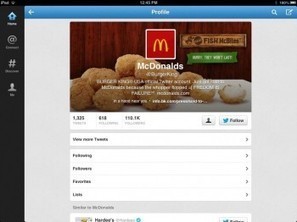





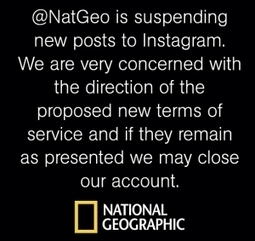





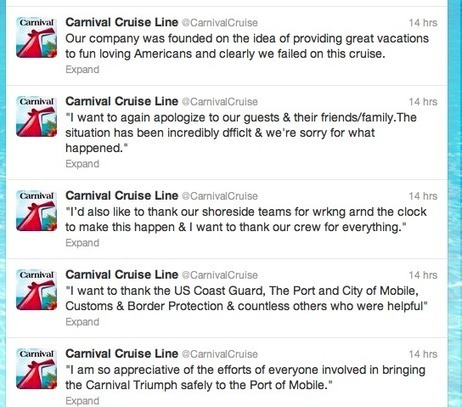



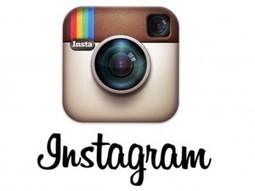
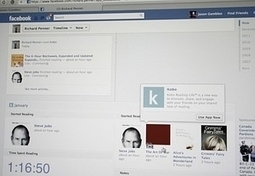










We need to keep in mind that this is breaking news and some of it will indeed be broken.
Totally..